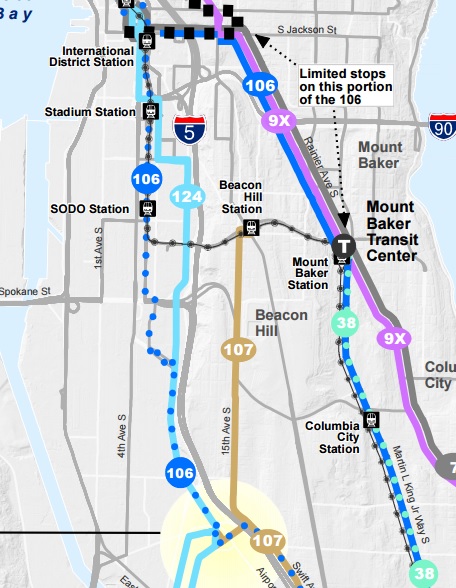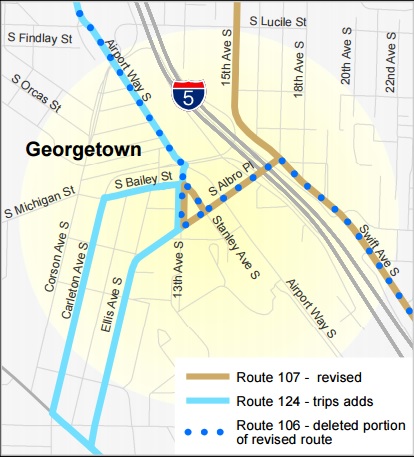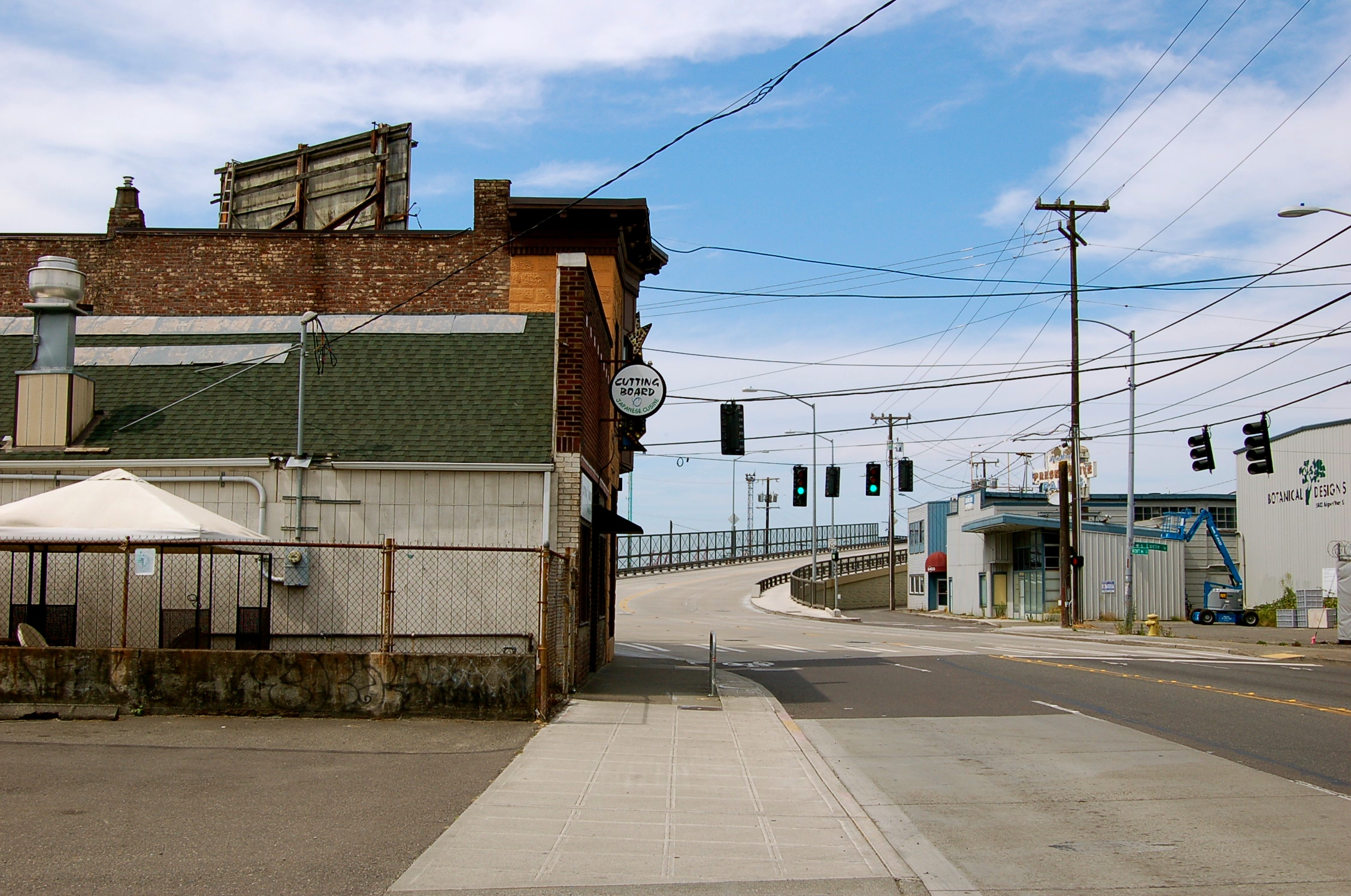After months of seeking feedback, King County Metro has finalized a proposal—with the King County Council’s transportation committee—to reconfigure the entire bus network in Southeast Seattle in order to provide a direct connection between Martin Luther King Blvd S and the International District. The constituency that has mobilized to pressure Metro to make such a change is mainly based around Asian Counseling and Referral Service (ACRS), who lost this direct connection in the form of route 42, which once connected the two properties ACRS provides services from, and was dramatically reduced in service span and then finally deleted in the years after the opening of Central Link.
The new route 38, created from the southern portion of the route 8 that now terminates at Mount Baker, provided Metro with a chance to recreate this connection. In this proposal, the 38 would be replaced by rerouting route 106 through the Rainier Valley instead of Georgetown and then extending it to the International District.

Metro is making up for the loss of the 106 in Georgetown in a few ways: first, it is coordinating with the City of Seattle to increase frequency on the 124 to every 15 minutes. Currently, the 106 and 124 have a combined frequency of approximately one bus every 15 minutes through the neighborhood, but they are not on coordinated schedules. This would also have the benefit of consolidating Downtown-Georgetown travel on one corridor downtown, which it currently is not. Riders must choose whether to catch the 124 on the surface or the 106 in the tunnel. The 106 being in the tunnel does have a not-insignificant impact on reliability on that route, however, according to several Metro riders we spoke with.
Second, they propose extending route 107 which currently runs between Renton and Rainier Beach to Beacon Hill Station, with a jog across the freeway into Georgetown. This jog will consist of a loop off of S Albro Place only and then a return to Beacon Hill. It will bypass the transit and nightlife corridor of Airport Way and likely become a little known option for infrequent travelers through the area. It is hard to imagine a similar deviation counting as service in a North Seattle neighborhood.

Metro is billing the 15-minute service on the 124 as a win for consistency for riders in Georgetown, and this very well may be the case. But the 124 will remain at 30-minute frequency after 7pm Monday though Saturday and all day on Sundays. Late at night, after 11pm, the route goes to every hour. At that time of night, it will be very dicey to decide if you can catch a 124 or if it would be quicker to catch a 107 to Beacon Hill or Rainier Beach Station. This decision would be easier if the 107 ran for more than one block in Georgetown.
Georgetown will likely not see light rail service within the lifetime of anyone reading this post today. In order for a neighborhood to reliably foster residents who can get around without a car, bus service needs to be frequent at all times of day. Georgetown is also a major nightlife destination with a variety of bars and venues centered on Airport Way, and an increasing number of festivals and events. The disappointing level of service at night is does not easily enable trips to Georgetown without utilizing your own vehicle or a car hire service. The City of Seattle has engaged in some high profile partnerships with Uber and Lyft within the past year in order to cut down on the amount of drunk driving late at night. In this case, the City of Seattle is using Prop 1 funds to purchase additional service hours on the 124 and all of those hours appear to be going toward service during midday. This is clearly in conflict with Vision Zero goals to prevent intoxicated driving.
Metro restructures tend to be set in stone for decades. ACRS has been trying to restore the former 42 service for quite some time and once that corridor is restored, it will likely stay. Georgetown should not be placed in the position of having to renegotiate service it already has from other sources, especially not after the two-year period during which the City will be providing funds to run the 124 more frequently. The King County Council should reconsider asking Georgetown to take such a large hit.
(Photo credit for header image: Stephen Jackson)
Ryan Packer has been writing for The Urbanist since 2015, and currently reports full-time as Contributing Editor. Their beats are transportation, land use, public space, traffic safety, and obscure community meetings. Packer has also reported for other regional outlets including BikePortland, Seattle Met, and PubliCola. They live in the Capitol Hill neighborhood of Seattle.


